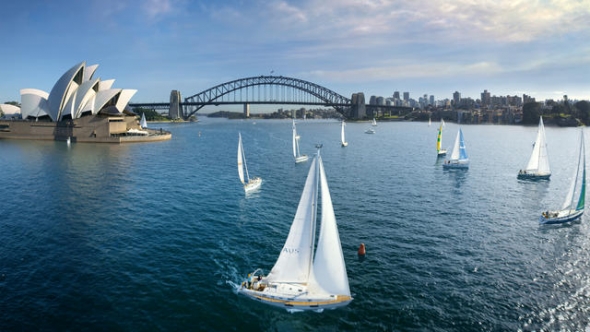The Experience: Bettering visuals that were sadly outdated
The Trick: Honestly, 15 years of HDTV improvements did most of the work for Disney
Where to film wasn’t the only integral part of the planning phase, either. In the 15 years since the original Soarin’ had become a staple of Disney theme parks, video recording technology had expanded mightily. IMAX was a novelty at the turn of the millennium. Today, many mainstream cineplexes have one. IMAX movie revenue has become so prevalent that it is tracked as its own box office category.
As more cinematographers have worked with the technology, IMAX has improved technically and visually. Also, the entire world switched from film to digital over the time. In other words, the timing of Soarin’ Over California was such that it just missed a new world of graphic storytelling.
In 2001, Disney employed the most established type of IMAX filming known at the time. Called IMAX HD, this style of filmmaking effectively tripled the clarity of 35mm frames. And it was HD by the conventional definition at the time, which was 1080p. That’s probably the same as your first HDTV television or possibly slightly better if you owned 720p or 1080i. The problem is that an IMAX theater experience is supposed to blow away home viewing.

Soarin’ Over California achieved this goal initially, but then it gradually degraded. I mean that literally. One of the principal criticisms of early IMAX was its artifacting. IMAX HD attempted to correct this by displaying at 48 frames per second, twice the cinematic standard. By the standards in place at the time, Soarin’ offered state of the art visuals. But…
How far behind were visuals in 2001? Consider that one of the biggest videogames of that year was Halo. And I mean the original one. State of the art graphics at the time were along the lines of Final Fantasy X, a game that has since been remastered for the express purpose of improving its graphics. A more Disneyfied example would involve a comparison of Toy Story 2 to a Pixar release today. It’s readily apparent how far the graphics technology has evolved in a relatively brief time. That’s true of home theaters as well. Virtually no one had HDTV in the early days of Soarin’, nor would they until a few years later. DVDs weren’t even in their glory years yet. That wouldn’t happen until 2005 and 2006.
Fast forward 15 years from the debut of Soarin’.
Image: Disney
The world has changed in terms of visual expectations. Today, most homes have at least one HDTV, and the graphics on smartphones and tablets display visuals at a higher quality than televisions available a decade ago. Now think about Soarin’, which used twin IMAX films to tell its story. Over time, those giant pieces of film (IMAX films platters used to weigh as much as 550 pounds) degraded. That’s why the artifacting became such a problem over time. Theme park tourists at Disney California Adventure and Epcot would scoff at the lessened quality of the once-stunning visuals.
For the new version of Soarin’, Disney once again employed the best IMAX product on the market. The difference is that it’s not a relic that will quickly become outdated. When Imagineers developed Soarin’ Over California, arguments were still ongoing about HDTV standards. Today, 4K isn’t even widely adopted yet, but it’s expected to become the standard for the next several years. The IMAX 4K Laster Project System eliminates the need for ridiculously heavy film stock with digital files that are lossless, which is to say it’s perfect video. Artifacting is a solved problem for the second version of Soarin’.
From the viewer perspective, Soarin’ Around the World provides true HD imagery that’s technically twice as good as the previous iteration. In reality, it’s quite a bit better. 1080p and 2160p are just numbers. Other facets of the conversation such as aspect ratio and film rate (Soarin’ still operates at 48fps, but 60fps is a possibility) factor in, but the most important one is that digital prints never age. This version will look example the same in 15 years, whereas the Soarin’ Over California film prints became laughably degraded. The new iteration is twice the HD quality without dirty projection issues.
Image: Disney
The result of all these improvements to the Soarin’ premise is unmistakable. Soarin’ Around the World absolutely dwarfs Soarin’ Over California in terms of scope, scale, and visuals. While it’s not perfect (yet), the advancements in technology over 15 years enabled Disney to tell a better story that covers the entire world rather than Disneyland’s small (but wonderful) part of it. My only lament is that the orange grove smell is lost in the exchange. To me, that’ll always be the greatest part of Soarin’.



Add new comment